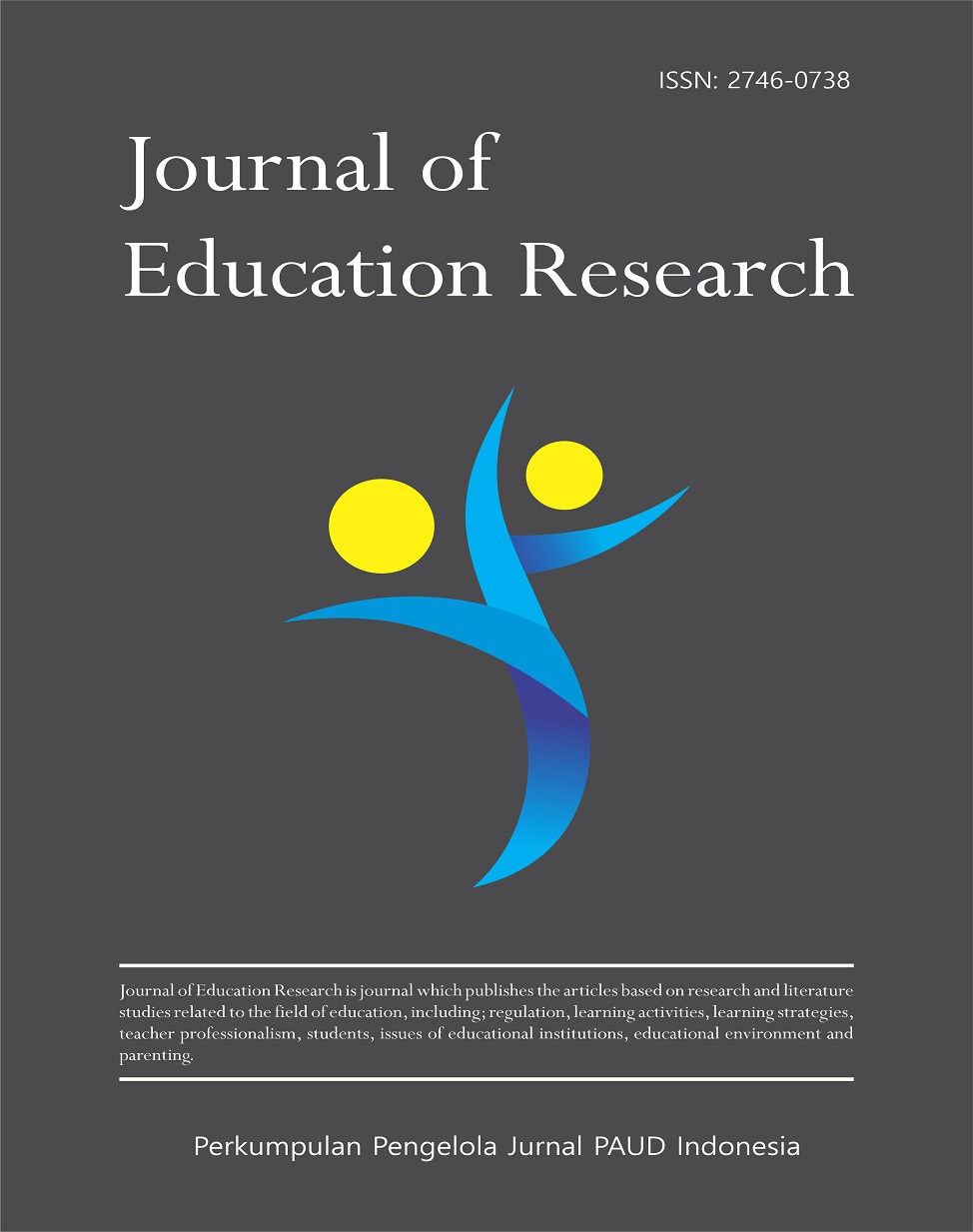Can AI Universally Help Students and Teachers?: A Cross-Cultural Investigation of Perceptions of AI's Potential in Education
DOI:
https://doi.org/10.37985/jer.v6i4.2846Keywords:
Artificial Intelligence, Education, Educators’ Perspectives, Teaching, Assessment, Cross-cultural AnalysisAbstract
As Artificial Intelligence (AI) increasingly advances and permeates our lives, education has been one of the most disrupted sectors. With numerous AI educational tools developed to enhance education, much research has also been done to assess their efficacy, merits and limitations. Nevertheless, past research has shown a striking lack of investigation into educators’ perspectives, which points to their limited representation in discourse about AI in education despite them being such pivotal stakeholders. Additionally, most past research studying public opinion on AI in education has been too general, with an evident lack of clarity in differentiating various types of AI used in each aspect of educators’ job scope, resulting in vague generalised findings. Therefore, to fill these gaps, interviews have been conducted on 22 professional educators to learn about their opinions on AI tools used in education derived from both their own personal experiences and second-hand knowledge. A comprehensive analysis of their responses then reveals valuable insights about areas in education with high potential for AI assistance, inherent limitations of AI, the importance of human educators amidst rapid AI advancement, the varying suitability of applying AI in various educational contexts (subject areas, educational system and academic levels) and the importance of much greater personal involvement of educators in the development of AI tools to optimise their effectiveness in enhancing education.
Downloads
References
Bista, N. (2019). Artificial Intelligence Techniques. EDUCBA. https://www.educba.com/artificial-intelligence-techniques/
Cumming-Bruce, N. (2020, November 27). U.N. Panel: Digital Technology in Policing Can Reinforce Racial Bias. The New York Times. https://www.nytimes.com/2020/11/26/us/un-panel-technology-in-policing-can-reinforce-racial-bias.html
de Oliveira, W. C., Gottardo, E., & Pimentel, A. R. (2020). Changes of Affective States in Intelligent Tutoring System to Improve Feedbacks Through Low-Cost and Open Electroencephalogram and Facial Expression. Lecture Notes in Computer Science (Including Subseries Lecture Notes in Artificial Intelligence and Lecture Notes in Bioinformatics), 12149 LNCS, 56–62. https://doi.org/10.1007/978-3-030-49663-0_8
Habegger, B., Hasan, O., Brunie, L., Bennani, N., Damiani, E., Habegger, B., Hasan, O., Brunie, L., Bennani, N., Kosch, H., Habegger, B., Hasan, O., Brunie, L., Bennani, N., Kosch, H., & Damiani, E. (2017). Personalization vs . Privacy in Big Data Analysis To cite this version : Personalization vs . Privacy in Big Data Analysis.
Hocquet, P. (2017, October 1). Trust, and don’t verify: the AI black box problem. Medium. https://medium.com/@PhilippeHocquet/trust-and-dont-verify-the-ai-black-blox-problem-442c2b15e79e
Holmes, M., Latham, A., Crockett, K., & O’Shea, J. D. (2018). Near Real-Time Comprehension Classification with Artificial Neural Networks: Decoding e-Learner Non-Verbal Behavior. IEEE Transactions on Learning Technologies, 11(1), 5–12. https://doi.org/10.1109/TLT.2017.2754497
Holmes, W., Porayska-Pomsta, K., Holstein, K., Sutherland, E., Baker, T., Shum, S. B., Santos, O. C., Rodrigo, M. T., Cukurova, M., Bittencourt, I. I., & Koedinger, K. R. (2022). Ethics of AI in Education: Towards a Community-Wide Framework. International Journal of Artificial Intelligence in Education, 32(3), 504–526. https://doi.org/10.1007/S40593-021-00239-1/FIGURES/1
Holstein, K., McLaren, B. M., & Aleven, V. (2017). Intelligent tutors as teachers’ aides: Exploring teacher needs for real-time analytics in blended classrooms. ACM International Conference Proceeding Series, 257–266. https://doi.org/10.1145/3027385.3027451
Kochmar, E., Vu, D. Do, Belfer, R., Gupta, V., Serban, I. V., & Pineau, J. (2020). Automated Personalized Feedback Improves Learning Gains in An Intelligent Tutoring System. Lecture Notes in Computer Science (Including Subseries Lecture Notes in Artificial Intelligence and Lecture Notes in Bioinformatics), 12164 LNAI(Ml), 140–146. https://doi.org/10.1007/978-3-030-52240-7_26
Latham, A., Crockett, K., McLean, D., & Edmonds, B. (2012). A conversational intelligent tutoring system to automatically predict learning styles. Computers & Education, 59(1), 95–109. https://doi.org/10.1016/J.COMPEDU.2011.11.001
Marr, B. (2021, July 2). Understanding the 4 Types of Artificial intelligence. Bernard Marr & Co. https://bernardmarr.com/understanding-the-4-types-of-artificial-intelligence/
Matsumura, L. C., Wang, E., Correnti, R., & Litman, D. (2020, July 22). What do teachers want to see in automated writing evaluation systems? ESchool News. https://www.eschoolnews.com/classroom-innovations/2020/07/22/what-do-teachers-want-to-see-in-automated-writing-evaluation-systems/?all
Montemayor, C., Halpern, J., & Fairweather, A. (2021). In principle obstacles for empathic AI: why we can’t replace human empathy in healthcare. AI & Society, 37, 1353–1359. https://doi.org/10.1007/S00146-021-01230-Z/METRICS
Nye, B. D. (2014). Barriers to ITS Adoption: A systematic mapping study. 12th International Conference on Intelligent Tutoring Systems, 8474 LNCS, 583–590. https://doi.org/10.1007/978-3-319-07221-0_74
Pantelimon, F. V., Bologa, R., Toma, A., & Posedaru, B. S. (2021). The evolution of ai-driven educational systems during the covid-19 pandemic. Sustainability (Switzerland), 13(23). https://doi.org/10.3390/su132313501
Samuels, M. G. (2012). Review: The Filter Bubble: What the Internet is Hiding from You by Eli Pariser. InterActions: UCLA Journal of Education and Information Studies, 8(2). https://doi.org/10.5070/D482011835
Shetty, P., Yadav, K., & Kunder, P. (2020). Automated Essay Grading System using NLP Techniques. International Journal of Engineering and Advanced Technology, 9(5), 1033–1042. https://doi.org/10.35940/IJEAT.E9880.069520
Sloane, M. (2018, July 16). Making artificial intelligence socially just: why the current focus on ethics is not enough. Artificial Intelligence and the Internet of Things: UK Policy Opportunities and Challenges; University of Westminster Press. https://doi.org/10.16997/BOOK25/
Stryker, C., & Kavlakoglu, E. (2024). What Is Artificial Intelligence (AI)? | IBM. IBM. https://www.ibm.com/think/topics/artificial-intelligence
The Investopedia Team. (2025). Artificial Intelligence (AI): What It Is, How It Works, Types, and Uses. Investopedia. https://www.investopedia.com/terms/a/artificial-intelligence-ai.asp
Walia, P. (2023, October 10). How can AI/ML be Leveraged in Solving Educational Inequality? - Turn the Bus. Turn the Bus. https://www.turnthebus.org/blog/how-can-aiml-be-leveraged-in-solving-educational-inequality
Wu, L., & Looi, C. K. (2010). Agent Prompts: Scaffolding Students for Productive Reflection in an Intelligent Learning Environment. Educational Technology & Society, 15(1), 426–428. https://doi.org/10.1007/978-3-642-13437-1_92
Zhai, X., Chu, X., Chai, C. S., Jong, M. S. Y., Istenic, A., Spector, M., Liu, J.-B., Yuan, J., & Li, Y. (2021). A Review of Artificial Intelligence (AI) in Education from 2010 to 2020. Complexity, 2021(1), 1–18. https://doi.org/10.1155/2021/8812542
Zhang, K., & Aslan, A. B. (2021). AI technologies for education: Recent research & future directions. Computers and Education: Artificial Intelligence, 2, 100025. https://doi.org/10.1016/j.caeai.2021.100025
Downloads
Published
How to Cite
License
Copyright (c) 2025 Natthanich Mekadenaumporn

This work is licensed under a Creative Commons Attribution-ShareAlike 4.0 International License.
Authors who publish with this journal agree to the following terms:
- Authors retain copyright and grant the journal right of first publication with the work simultaneously licensed under a Creative Commons Attribution-ShareAlike 4.0 International License that allows others to share the work with an acknowledgement of the works authorship and initial publication in this journal.Â
- Authors are able to enter into separate, additional contractual arrangements for the non-exclusive distribution of the journals published version of the work (e.g., post it to an institutional repository or publish it in a book), with an acknowledgement of its initial publication in this journal.
- Authors are permitted and encouraged to post their work online (e.g., in institutional repositories or on their website) prior to and during the submission process, as it can lead to productive exchanges, as well as earlier and greater citation of published work (See The Effect of Open Access).









